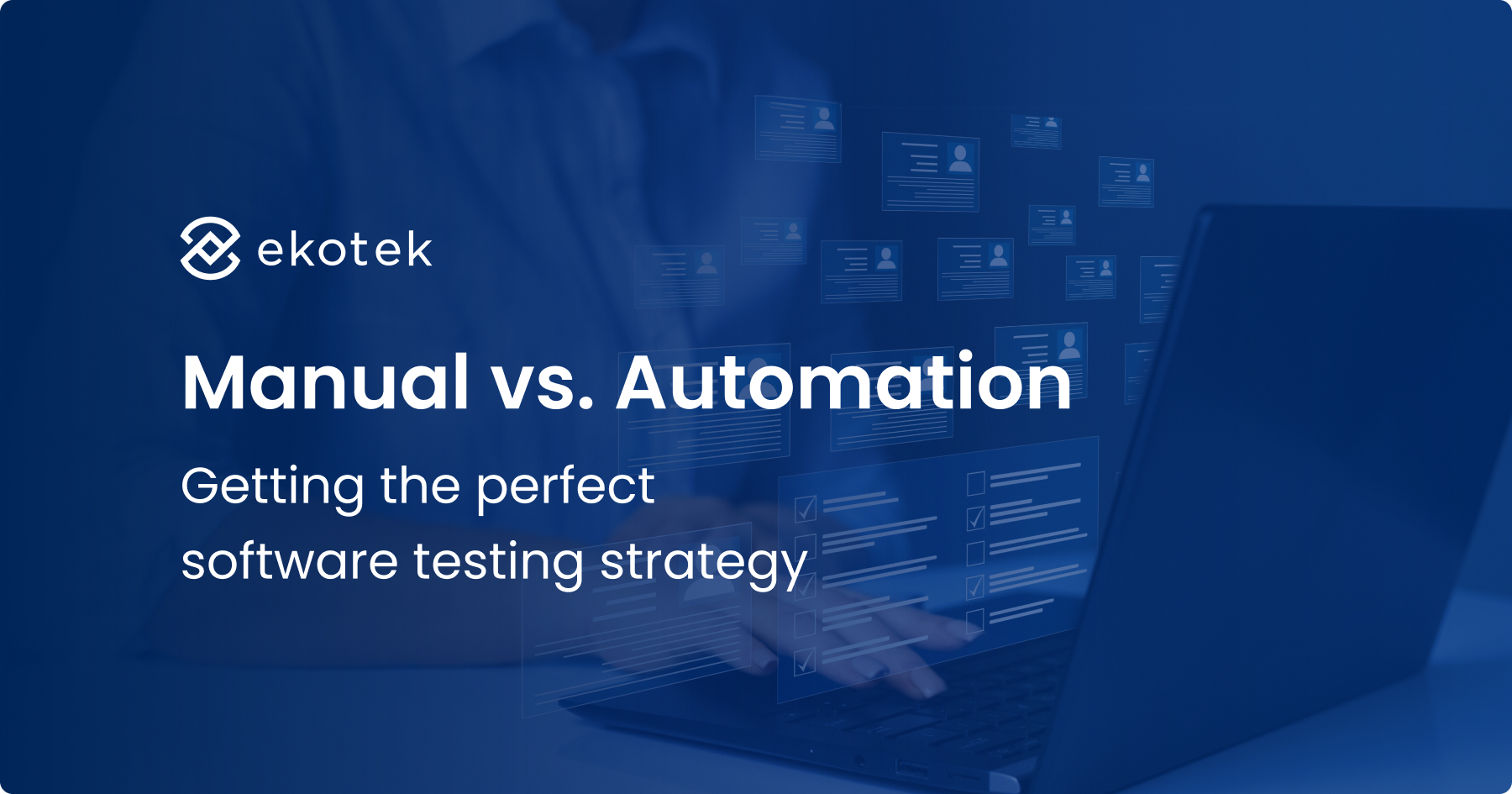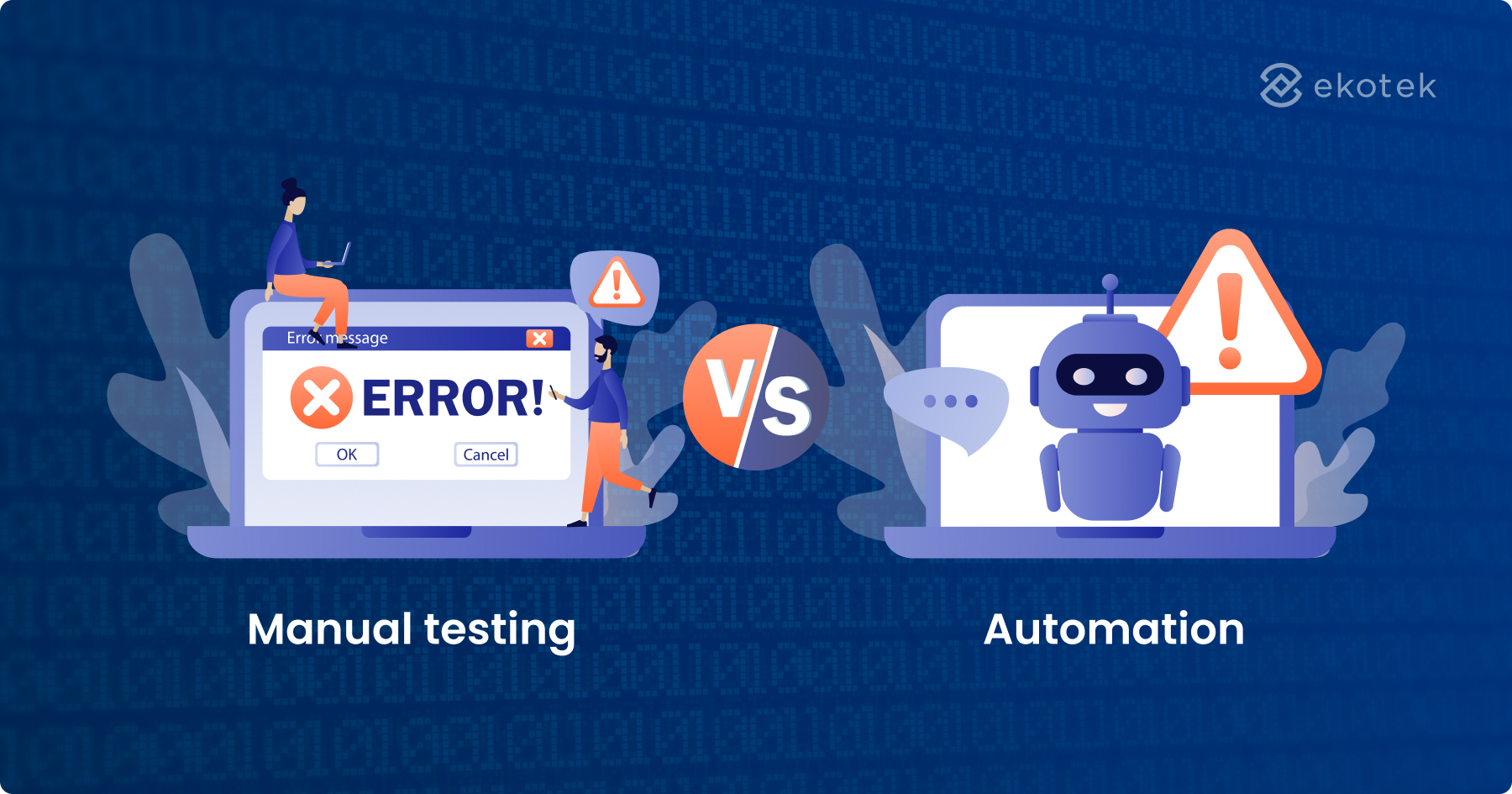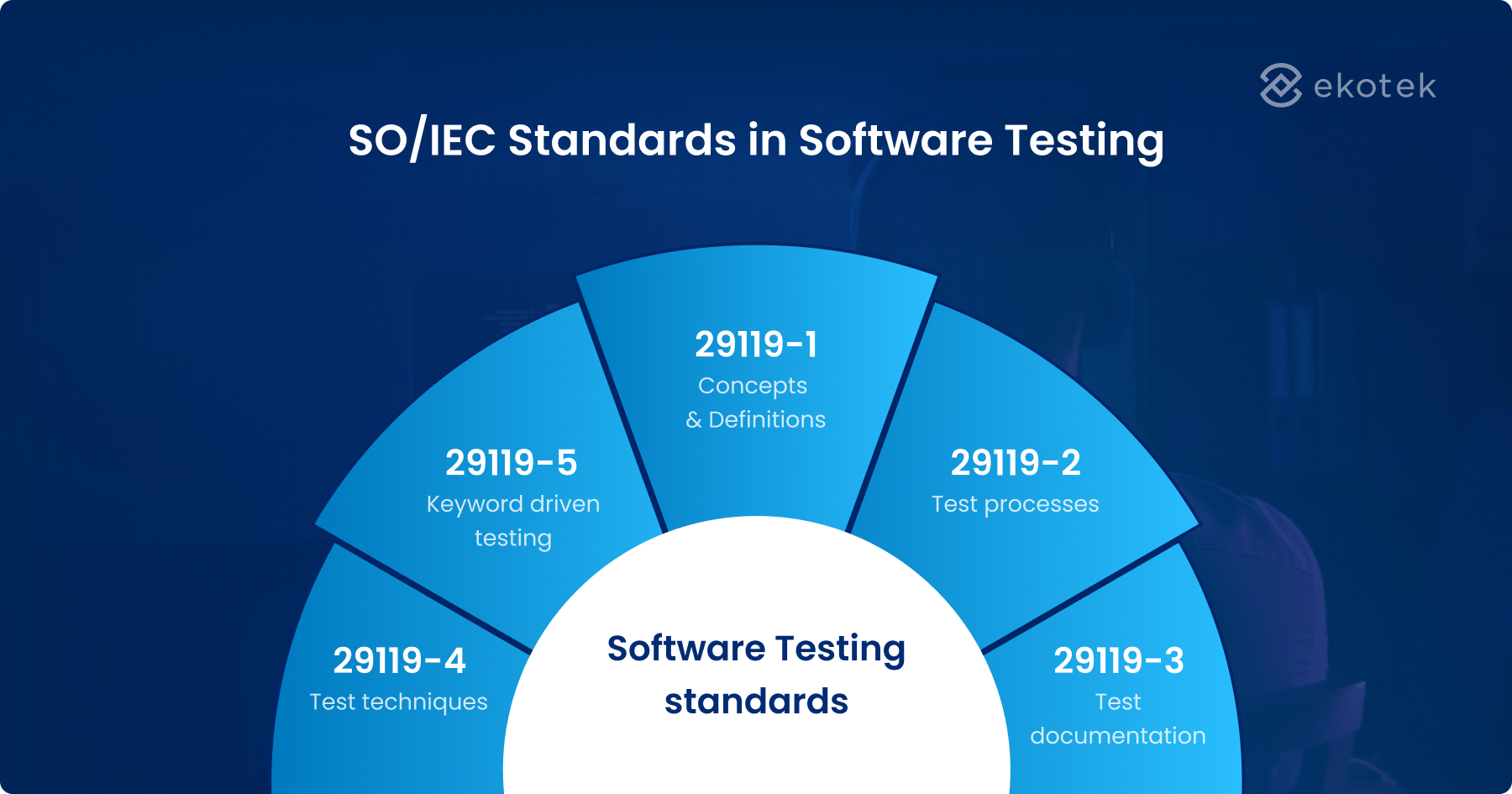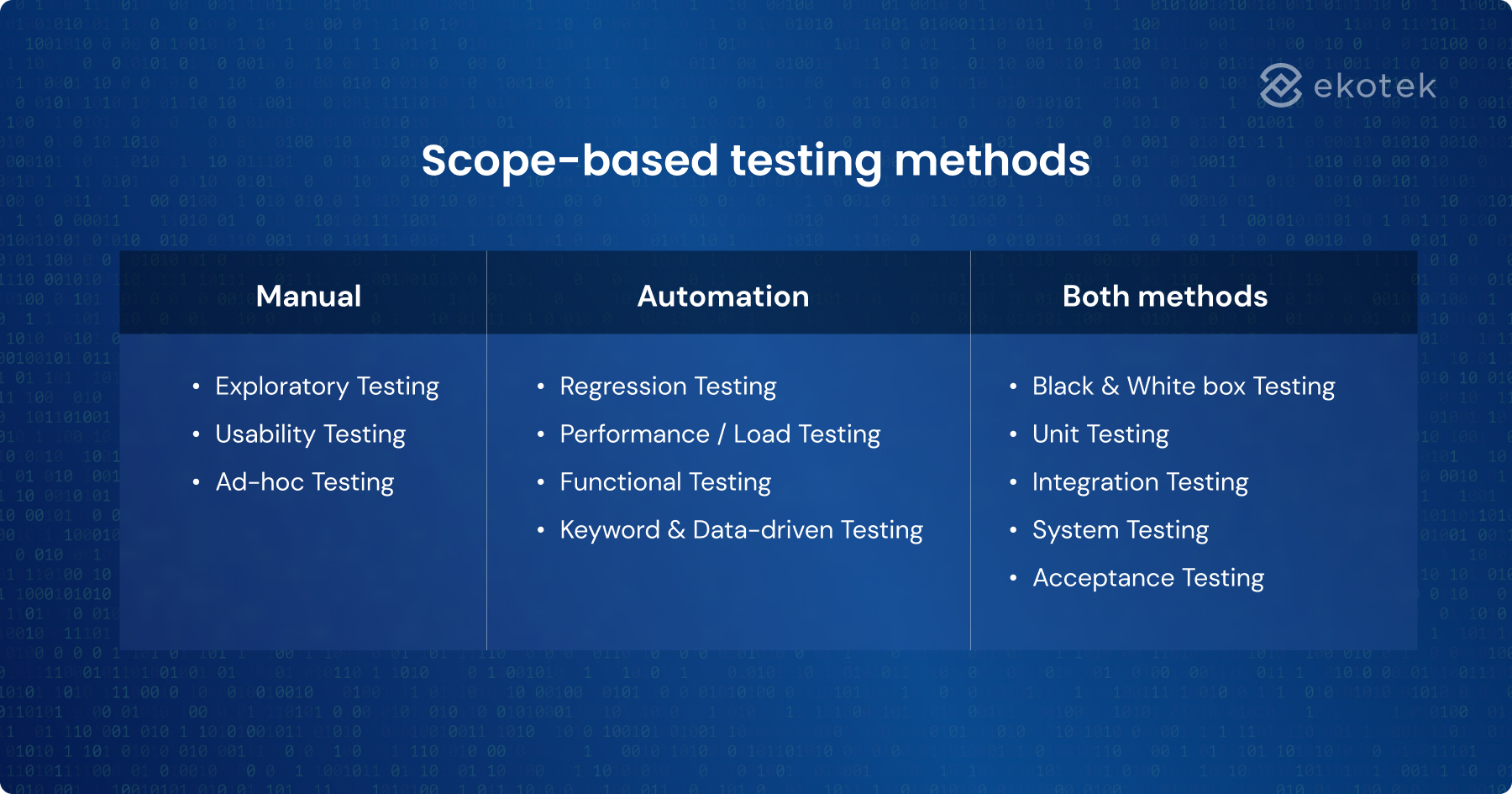
- 1
- 2
- 3
- 4
Testing is an essential process in software development that involves checking, verifying, and validating the requirements of the product. Done manually at first, the testing scenario has then changed drastically with the advent of automation testing. It’s essential that we understand the pros and cons of both methods and how to combine manual testing vs. automation testing for the optimal software testing strategy.
Manual vs. Automation Testing: The differences
 Manual Testing is the process of testing software manually by a QA Analyst to discover bugs in software development. It involves executing test cases of all software features and generating test reports without the help of any automation software testing tools.
Manual Testing is the process of testing software manually by a QA Analyst to discover bugs in software development. It involves executing test cases of all software features and generating test reports without the help of any automation software testing tools.
Automation Testing is the process of writing pre-scripted tests to execute test cases that compare actual results with expected results, using different tools and programming languages. The goal is to cover a large number of repetitive and regressive cases in the optimal time.
📌Read more: A complete guide to software testing outsourcing
Pros & Cons of test automation vs. manual testing
Manual Testing detects bugs and issues with test cases performed by experienced testers, so it usually requires lower expenses for short-term projects, allows more room for flexibility, and can discover actual user pain points. However, it takes time for the tester to go over all test cases, which can be a monotonous and repetitious task. Plus, manual testing requires extensive product knowledge, and human errors are unavoidable.
Meanwhile, Automation Testing offers enhanced precision, faster performance, and cost efficiency in the long run. However, it can be complicated to integrate into the existing software development workflow, as the process requires initial planning and investment to set up the necessary infrastructure and program testing scripts.
📌 More on development cost: How much for developing a web application in 2023?
For a more detailed comparison, you can refer to our table in the next section!
Key differences between manual testing vs. automation testing
| Criteria | Manual Testing | Automation Testing |
|---|---|---|
| Initial investment | Lower cost | Higher cost |
| Expenses | Human resources | Automation tools Human resources |
| Skills required | Build test plan Mimic user behaviors | Build test plan Code test scripts |
| Precision | Lower | Higher |
| Flexibility | Higher | Lower |
| Test coverage | Smaller | Larger |
| Turnaround time | Slower | Quicker |
| Report | Manual documents | Automated system |
| Suitable test scopes | Exploratory testing Usability testing Ad-hoc testing | Regression Testing Load Testing Performance Testing Repeated Execution |
So, when to use what?
You see “suitable test scopes” mentioned above with a ton of technical terms, but what do they actually mean? In this section, we’ll dive deeper into different types and scenarios of the software development process that require testing, and advise you on the most suitable approach.
1. By testing scopes
Manual Testing is the go-to solution for:
- Exploratory Testing: This requires a skilled tester as the requirement specification document is not very descriptive. Testers must use their expertise to discover and execute all test cases.
- Usability Testing: With this scope, the tester must observe the functionality of the software as experienced by end users, which is something machines cannot imitate.
- Ad-hoc Testing: As the name suggests, Ad-hoc testing is performed without initial test case documentation, this scope aims to find defects through non-traditional approaches, in which the tester plays a critical role.
Automation Testing, on the other hand, is suitable for:
- Regression Testing: The process that goes over all previous test cases to ensure that new software upgrades do not lead to new bugs and defects.
- Performance / Load Testing: To test the software’s speed, scalability, and stability under various workload conditions.
- Functional Testing: To ensure all functions and features of the software work as intended.
- Keyword and Data-driven Testing: A unique technique in automation testing. Test cases are designed on a series of operations, specified by keywords or data input to simulate user actions.
These scopes can go with either manual or automation:
- Black box Testing: A method of testing used to simulate the experience of an end user, as the tester is not aware of the underlying code or architecture of the software.
- White box Testing: With the testing knowing the software’s internal workings, this type of testing is used to ensure that individual components of the software function correctly.
- Unit Testing: Individual units, the smallest testable parts of the source code are examined to determine whether they are fit for use.
- Integration Testing: The method that tests the interaction between different components of a software system to ensure a seamless data flow and overall system performance.
- System Testing: After all components have passed integration testing, system testing evaluates the entire software system’s compliance with specified requirements.
- Acceptance Testing: The method to determine whether a software system meets the requirements and expectations of its users, including aspects like the interface, functionality, and overall user experience.
📌 Related topic: A-Z Guide on Software Outsourcing in Vietnam
2. By project nature
Manual beats automation in cases of:
- Initial software development process that requires flexibility: Manual tests allow testers to test and see results immediately if they have a specific scenario in mind. On the other hand, automation testing takes more time and effort to set up.
- Short-term and small projects: Automation testing requires a heavy upfront investment, which can’t be justified to be used in projects with minor features or simple code.
- End-user testing: No machine can determine whether a website or an app provides a satisfactory experience – we need actual humans testing it to draw necessary conclusions.
On the contrary, automation proves to be superior when:
- The test load is heavy and repetitive: Several testing scopes, such as regression testing, must be run regularly throughout the entire system to ensure no interferences occur from newly added codes. As the process does not require much manual supervision, automation is the best option to optimize your resources.
- Advanced GUI testing: GUI testing is the process of checking the Graphical User Interface (GUI) of software to ensure it behaves as expected. In case software operates on too many devices and platforms, it’s advised to write scripts for automated testing.
Can automation testing replace manual testing?
The short answer is: No. We need both manual and automation testing to completely verify the software inside out. While automation testing can help increase efficiency and reduce errors in the testing process, not all tests can be automated. Scopes such as exploratory and ad-hoc testing specifically require humans, as machines cannot replicate human intuition, creativity, and judgment.

The International Organization for Standardization (ISO) has established five international standards for software testing which are followed for any software development life cycle, to help organizations ensure the quality and reliability of their products. This includes five standards:
- ISO/IEC 29119-1: Published in September 2013, this standard provides software concepts and meanings that are useful in software development processes.
- ISO/IEC 29119-2: Also published in September 2013, this standard is a subpart of ISO Standard 29119 and deals with all the test processes for better product output.
- ISO/IEC 29119-3: Published in September 2013 along with the previous two standards, is responsible for delivering complete documentation of the product and has other importance related to the documentation of the product.
- ISO/IEC 29119-4: Published in 2014, this standard provides the right testing techniques and strategies for doing software testing.
- ISO/IEC 29119-5: Published in 2015, ISO 29119-5 has unique importance that deals with keyword-based software testing
Related standards include:
- ISO/IEC 33063: Process Assessment Model
- ISO/IEC 20246 Work Product Reviews
So if you’re searching for a testing firm, don’t forget to double-check whether they are certified by ISO to comply with standardized software testing practices – just like how our testers at Ekotek Technology are doing!
Getting the perfect testing strategy
To ensure speedy as well as cost-efficient software deployment, it’s essential to find the right balance between manual and automation testing. And how can we achieve that? Firstly, map out beforehand all testing scopes to determine which will be run manually, and which will be automated. Then, consider your budget, resources, and timeline with various solution providers in both areas.
We hope that this article will be of great help for you to best examine your digital product. you throughout the journey And if you’re looking to validate your software’s testing strategy with a domain expert – schedule a free consultation with us today!
We hope that this article will be of great help for you to best examine your digital product. you throughout the journey And if you’re looking to validate your software’s testing strategy with a domain expert – schedule a free consultation with us today!
- 1
- 2
- 3
- 4
